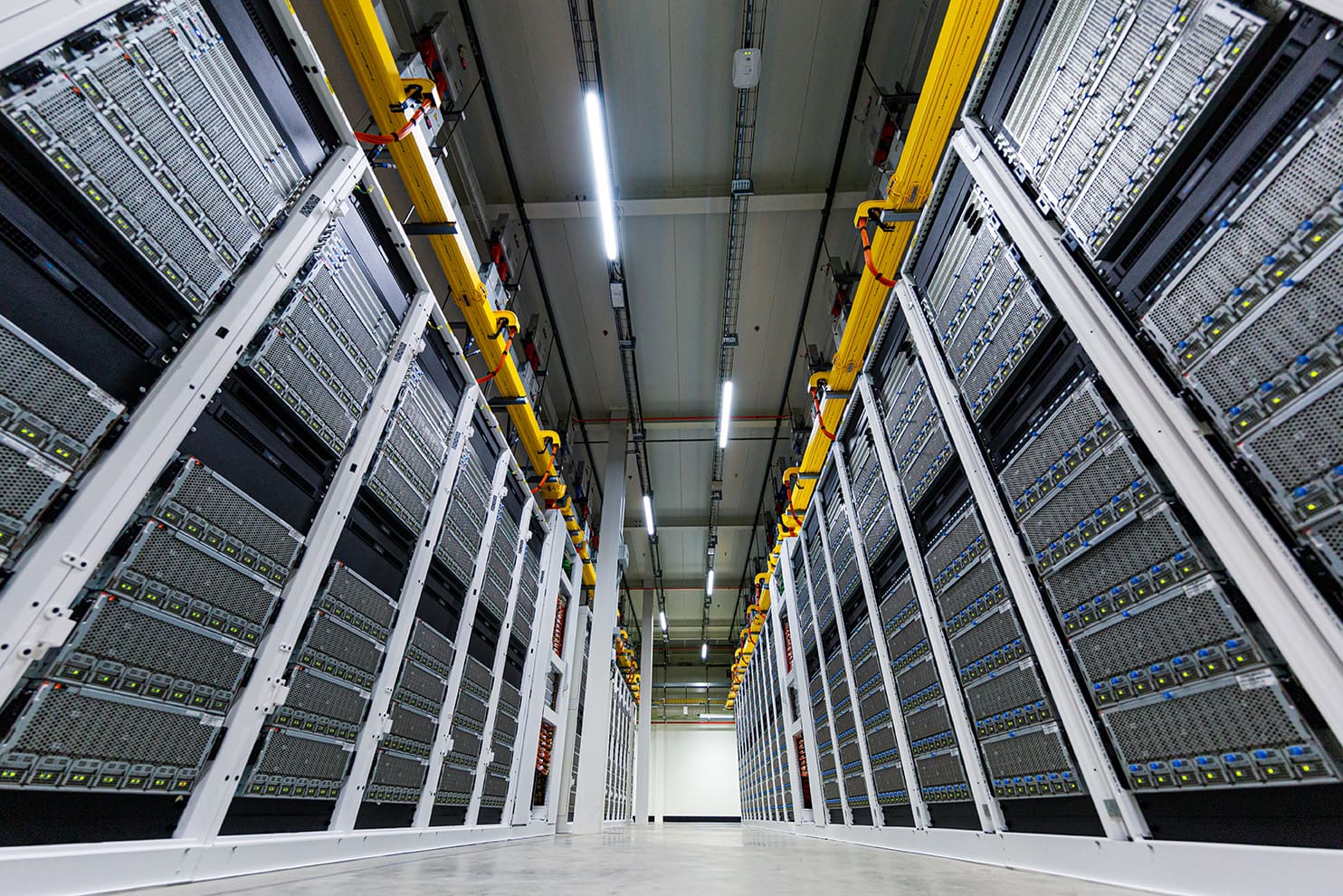Microsoft has announced the launch of a new generation of data centers designed to optimize artificial intelligence (AI) workloads and completely eliminate the use of water in cooling systems. This advancement, which began implementation in August 2024, is part of the company’s commitment to reducing its environmental impact and promoting more sustainable practices in its global operations.
Waterless Data Centers: A Milestone in Sustainability
Traditionally, data centers have relied on water evaporation systems to cool servers, a process that consumes millions of liters of water each year. However, Microsoft’s new design adopts chip-level cooling systems that precisely control temperature without resorting to evaporation. These systems operate through a closed-loop circuit that recirculates already-used water, eliminating the need for constant replenishment.
According to Microsoft, this approach will save over 125 million liters of water per year per data centerA data center or data processing center (DPC) …, a significant amount especially in regions facing increasing water stress. While water will still be used for administrative purposes such as bathrooms and kitchens, this technology represents a radical change in water management in the sector.
Water and Energy Efficiency
Water efficiency in Microsoft’s data centers is measured through an index called Water Usage Effectiveness (WUE), which calculates the water used for cooling and humidification against the energy consumption of the computing equipment. During the last fiscal year, the company achieved an average WUE of 0.30 liters per kilowatt-hour, an improvement of 39% compared to 2021.

Since the early 2000s, Microsoft has reduced its global WUE by 80%, thanks to the implementation of more efficient technologies and the use of alternative water sources, such as recycled and reclaimed water, in states like Texas, Washington, and California, as well as in other countries like Singapore.
The company’s long-term goal is to reduce WUE to near-zero levels across all data centers adopting the evaporation-free design.
Energy Challenges and Solutions
The shift to mechanical cooling systems instead of evaporative ones may slightly increase energy consumption. However, Microsoft is mitigating this impact by using advanced chip-level cooling technologies that allow operation at higher temperatures without compromising efficiency.
Additionally, the company is developing innovations to provide more targeted cooling, further reducing energy consumption in the future.
Gradual Implementation and Pilot Projects
Although Microsoft’s current fleet of data centers still uses a combination of air and water cooling systems, new projects, such as the data centers in Phoenix (Arizona) and Mt. Pleasant (Wisconsin), are set to begin implementing evaporation-free designs in 2026. These new sites will be operational by the end of 2027, marking a significant step toward the widespread adoption of this technology.
Since August 2024, all new data center designs from Microsoft are already utilizing this next-generation cooling technology, reaffirming the company’s commitment to sustainability and innovation.
A Sustainable Future for the Cloud and AI
This advancement is part of Microsoft’s “Sustainable by Design” program, which aims to transform the sustainability of artificial intelligence and data centers through innovative, environmentally-friendly solutions. Through these initiatives, Microsoft reinforces its leadership in the tech industry, demonstrating that business growth can go hand-in-hand with environmental responsibility.
Source: Microsoft

